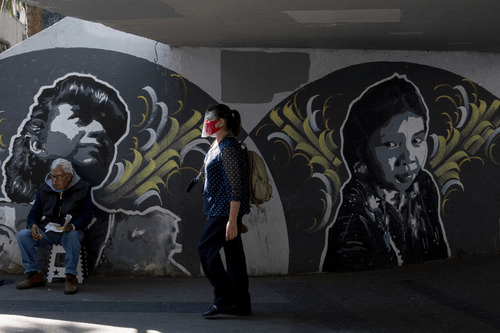The coronavirus epidemic is still spreading rapidly in the Western Hemisphere. In Mexico City, the capital of Mexico with a population of 10 million, the local government, inspired by China’s epidemic prevention measures “health codes”, began to use QR codes and other digital means to fight the second wave of the epidemic.
With the continuous deepening of Mexico’s resumption of work and production, public places have been opened and business hours have been extended throughout the country. The scale of crowd gatherings has increased and the flow has increased. With the arrival of the autumn and winter flu season, Mexico’s COVID-19 epidemic has rebounded, and various epidemic data have risen rapidly.

Mexico’s Ministry of Health said that the country is currently at the peak of a second wave of epidemic, which is expected to continue until March next year. Mexico City, as the “hardest hit area” of the epidemic, added more than 5,000 new confirmed cases, more than 250,000 confirmed cases, more than 18,000 deaths on December 11 alone, and the proportion of beds in intensive care wards rose to about 70%.
Since mid-to-late November, Mexico City has introduced measures such as increasing testing and controlling the flow of people to cope with the escalation of the epidemic, including learning digital anti-epidemic methods from Chinese cities across the ocean.

The reporter saw on the streets of Mexico City that some banks, cinemas, museums, shopping malls and other places were prominently pasted with QR codes at the entrances. After scanning the code for a few seconds, people will generate basic data such as location and time.

Relevant departments count the positive results of nucleic acid test of health departments every day, inform close contacts of the risk of infection through these data, send questionnaires on physical health, and provide free nucleic acid testing.
In the view of Antonio, a Mexican city, this measure has played a great role in collecting and aggregating contact data, which is conducive to timely tracking the trend of the epidemic at critical moments.

Eduardo Garcia, the official in charge of digital government in Mexico City, told reporters that the key to Mexico City’s current anti-epidemic work is to deal with the relationship between people’s health and economic development, to prevent the escalation of the epidemic, avoid restarting large-scale and long-term home quarantine measures, and orderly promote the resumption of work and production.
Garcia said that China was one of the first countries to start to use health codes and other technical means to fight the epidemic. Wuhan and other cities have applied digital technology to build an anti-epidemic system in the epidemic to help effectively control the epidemic.
The Mexico City government uses QR codes to track close contacts of confirmed patients in combination with the local operating environment, legal norms and technical conditions, and after learning from Chinese experience.

According to the Mexican City government, within 72 hours of the launch of this measure, more than 80,000 businesses registered for use, covering nearly one million people. During this period, more than 70 confirmed cases were detected, and more than 6,000 close contacts were contacted in a timely manner.
Garcia said that in China, people are more adaptable to digital life. The promotion and popularization of digital technologies such as QR codes are not products of the epidemic. From street stalls to franchise stores, they can be paid through digital platforms.
Many Mexican people are not familiar with digital means such as QR codes. Mexico can use the epidemic to accelerate learning and learning from China’s experience and make adjustments in the light of local realities to narrow the gap with Chinese cities in technology application.

The anti-epidemic experience of big cities is also one of the important contents of the Mexican city government’s “requising from” from China. According to Garcia, the metropolitan area of Mexico City has a population of more than 20 million, which is the “hardest hit area” of the epidemic in Mexico.
The successful experience of China’s large cities in the fight against the epidemic this year can provide reference for the second wave of epidemic prevention and control in Mexico City.
At the beginning of this year, Garcia and his colleagues went to Shenzhen for a field trip plan to be “soaked up” due to the epidemic. In the past few months, he has learned from digital anti-epidemic experience through video exchanges with his Chinese counterparts and thought about the future development direction of “digital government” construction in Mexico City.
Garcia said that in the post-epidemic era, the Mexico City government hopes to carry out more exchanges with Chinese cities, expose citizens to more digital services, improve the level of digital government affairs, and provide citizens with higher value-added services.


